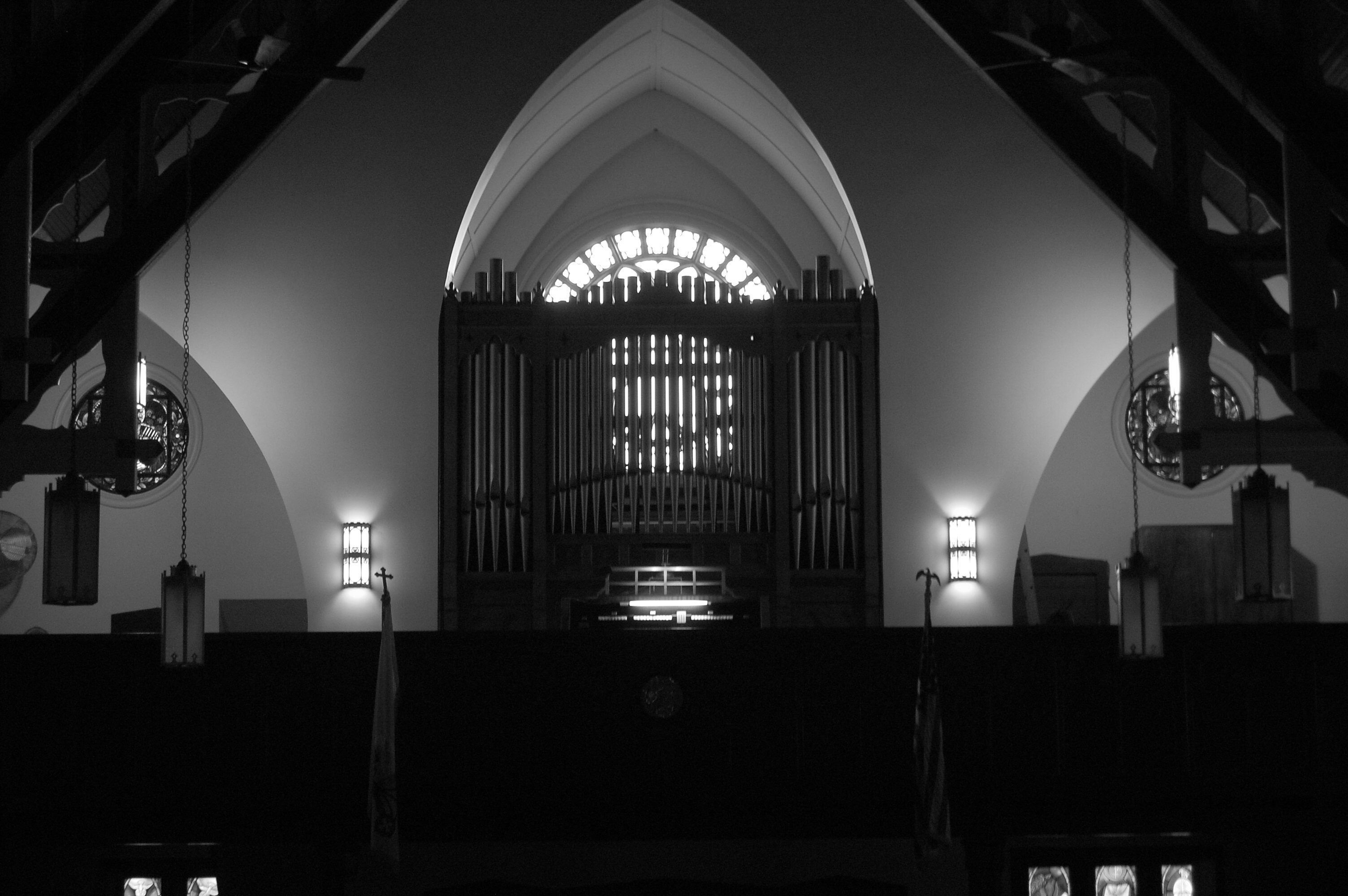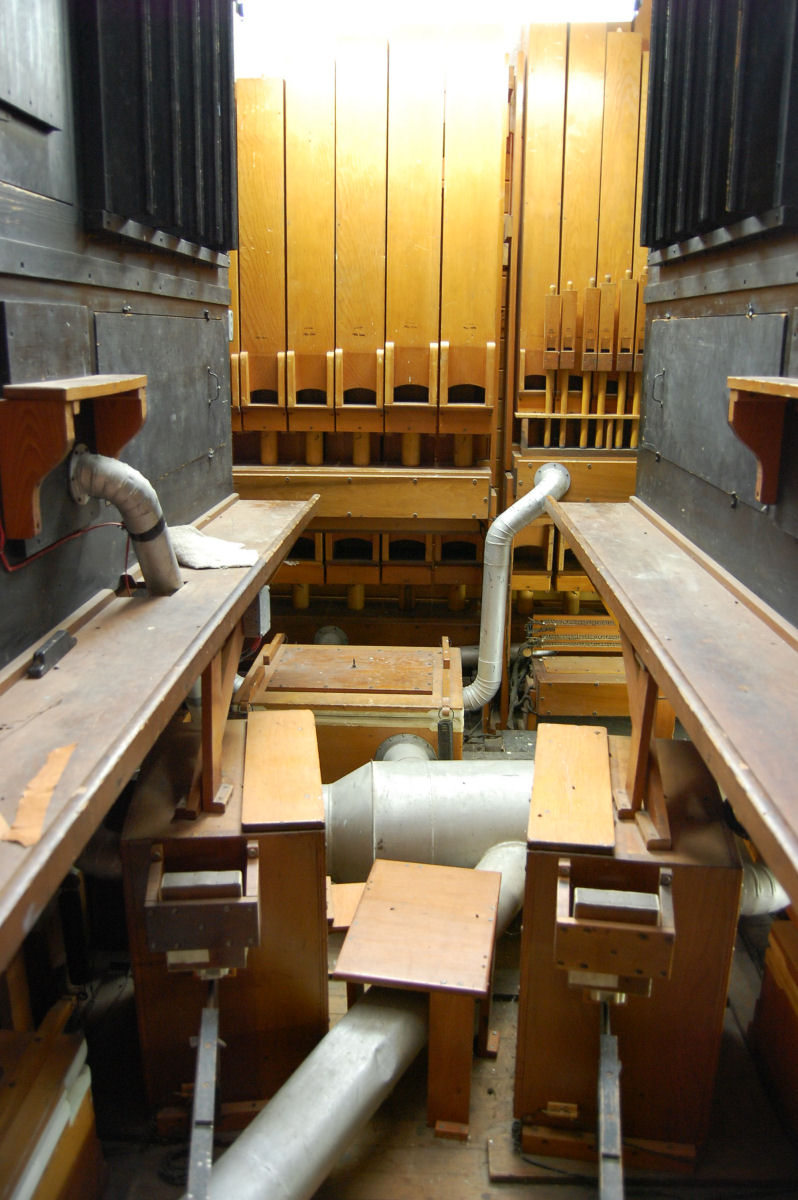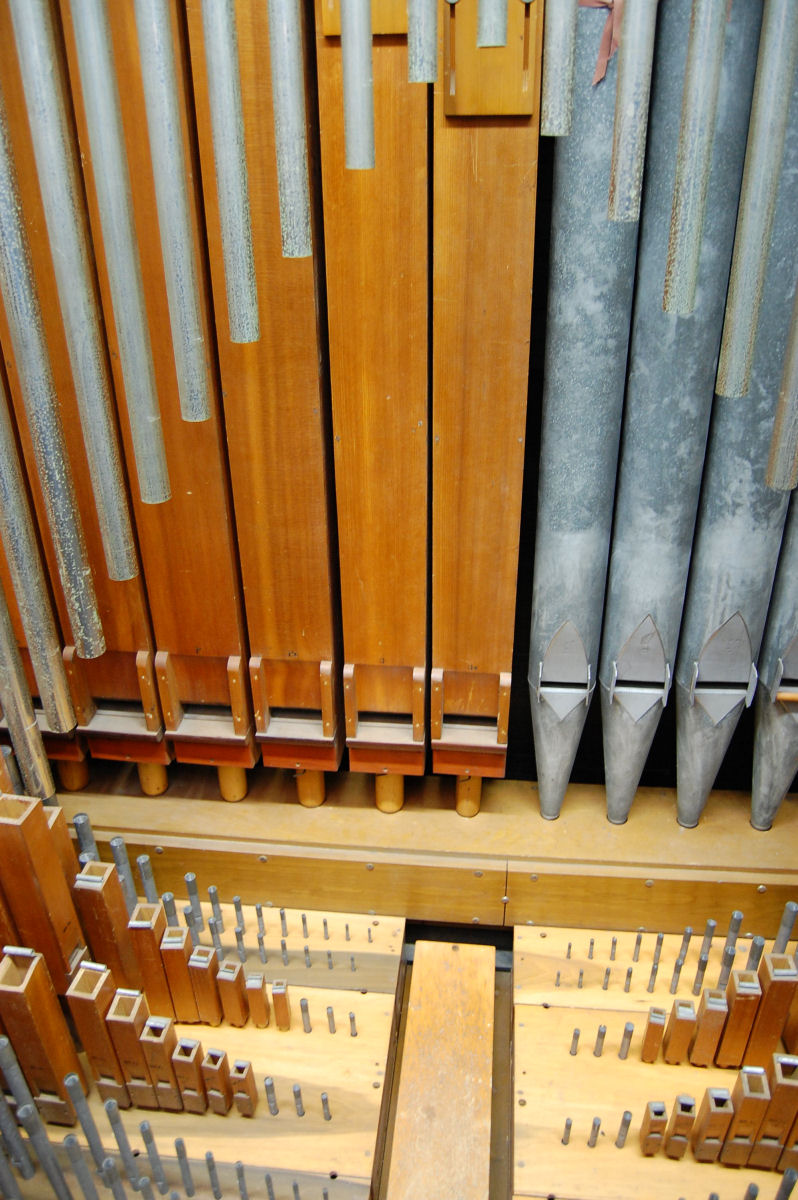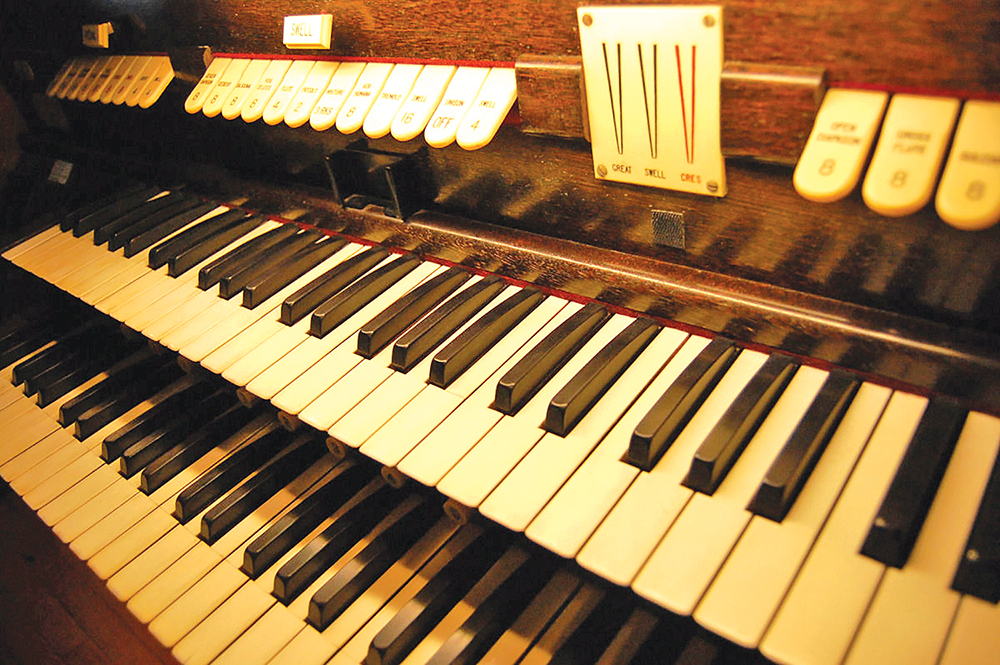The organ at Our Lady of Ostrabrama Church was built and installed in 1938 by the firm Geo. Kilgen & Son, Inc., of Saint Louis, MO. Kilgen was a prominent builder of organs and was in business from the mid 19th century to the mid 20th century. The Kilgen family built organs for many years before that, starting with Sebastien Kilgen, who in 1640, built his first organ in Germany. His descendent, George Kilgen was born in Germany in 1821 and emigrated to the US in 1840 for political reasons. Upon his arrival in NYC, he became employed by the Jardine organ company - the company which would later build the first organ at the soon-to-be completed St. Patrick's Cathedral. He then split with Jardine and founded his own company in 1851, then moving it to St. Louis in 1873, where his company became the principal supplier of church organs in the midwest. George made his son Charles a partner in 1885 and changed the company name to Geo. Kilgen & Son, Inc. After George's death in 1902, his son Charles Kilgen ran the company and was responsible for establishing the firm as one of the finest producers of pipe organs in the US. In the late 1920s, St. Patrick's Cathedral signed a contract with Kilgen to build two brand-new pipe organs to replace to old Jardine organ (Jardine was George Kilgen's first employer upon arriving to the US). Following construction and installation that lasted from 1928-1930, Kilgen built and installed a modest chancel organ and the famous, gigantic gallery organ in the newly-refurbished cathedral. The two Kilgen organs can still be heard today, although they have been tonally modified over the years and sound quite different from their original composition. Charles Kilgen died in 1932, leaving the company in the hands of his four sons. In a 1938 edition of The Diapason, a monthly magazine for organists, an announcement was made that a new, large Kilgen organ was to be installed in Our Lady of Ostrabrama RC Church in Cutchogue, which was described as being "the most imposing structure in this fashionable summer colony." With every organ-building project, representatives from the firm are sent to the site to make measurements of the space that will house the organ chamber. Specifications are proposed based on the available physical space and funds. The organ is then built and assembled at the factory site, in this case, in St. Louis. Every component of a pipe organ is made by hand and from scratch, and is the result of thousands of hours of work from skilled artisans. Behind the delicate facade of this particular organ is an intense network of wiring, ductwork, massive reservoirs, a blower, two large swell chambers, and hundreds of pipes ranging in size from the size of a q-tip to as long as 16 feet. After the organ was built, assembled, and tested in St. Louis, it was taken apart, packed in crates, and shipped to Cutchogue via railroad and trucks. According to another announcement in The Diapason, the organ was to be installed in early Spring of 1938 and was to be played publicly for the first time on April 17, 1938 - Easter Sunday. In 1939, only one year after the organ's installation, disagreements between the four sons of the late Charles Kilgen led to the dissolution of Geo. Kilgen & Son, Inc., leading them to branch off starting their own companies, which would all fail after a few years. The Kilgen at Our Lady of Ostrabrama Church is one of the last built by the esteemed firm, and it is one of the few that exists in the United States in its original condition. Physically, Kilgen organs are very well-built, and sturdy instruments. In fact, when the Kilgen organs at St. Patrick's Cathedral were suffering from old age in the 1990s, it was advised to restore the organs as opposed to replacing them due to the high-quality of workmanship. Tonally, this organ was built during a time in which it was fashionable for the organ to imitate the sounds and colors from an orchestra, giving it a lush, rich, and rounded tone. Roughly a decade later, the bright, clear, and high-pitched tone found in Baroque era organs came into fashion. While this was a brief fad, it sadly resulted in the death or bastardization of thousands of organs built in the 1920s and 1930s, especially those built by Kilgen. Fortunately, the Kilgen organ at Our Lady of Ostrabrama was spared of this stylistic movement and it has retained its original tonal qualities, all of which are back in style today. Next to the grandfather clock, the pipe organ was the most technologically advanced and complex human invention ever made for a good chunk of our history. It has continued to evolve with changes in technology, and given the available technology in 1938, the organ at Our Lady of Ostrabrama was the equivalent of being the most complex house-sized computer. This instrument is not only a treasure to the North Fork, but to our nation's musical history. The Kilgen organ has played for every mass, funeral, wedding, first communion, confirmation, and concert at Our Lady of Ostrabrama Church for the past 82 years. It has inspired generations of worshippers, visitors, and musicians, including myself. As the organ accelerates in its aging process, much like your iphone, it, too, will stop working properly. To preserve the legacy of this instrument, a restoration is absolutely necessary, for it is the crown jewel of organs not only on the North Fork, but for all of Long Island.
William Roslak
Our Lady of Ostrabrama
Attn: Pipe Organ Fund
3000 Depot Lane
Cutchogue, N.Y. 11935
Please accept our thanks for supporting our cause. We'd love to have you visit us to hear the beautiful music our historic pipe organ can make!
Suffolk Times - Congregants at Cutchogue Church Raising Money to Repair Rare Pipe Organ
News12- Parishioners Raise Funds to Recondition Rare Pipe Organ in Cutchogue Church




